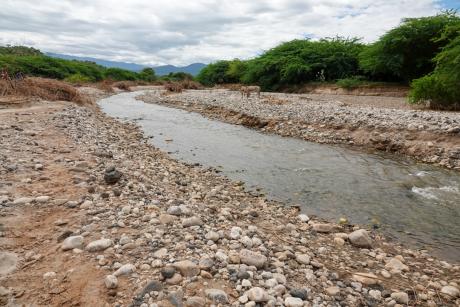
Over 350 families in one Kenyan community are living in despair after their homes were swept away by a powerful torrent of water.
People in a community in Pakase, Shompole, location are seeking refuge with neighbours after a swollen river changed its course unexpectedly directly sweeping away over 350 homes.
On 23rd May, MAF pilot Jono transported a team of World Relief International staff and MAF’s Disaster Response team to Shompole airstrip. Loaded on to the plane were jerrycans, aqua tabs and treated mosquito nets.
I managed to grab my children and move to a higher ground.
Among those affected is Letoi, a mother who recounts the horrifying experience.
She says, “We were still asleep around 9 am on Monday when we heard the ominous sound of rushing water approaching our home.”
“Upon looking outside, I witnessed a powerful torrent moving towards us. I managed to grab my children and move to a higher ground.”

He shares, “I had just relocated my family a few days before the incident happened but some of my family members have been affected. The residents who have been affected are now seeking refuge with relatives and other neighbouring homes.”
The community of Pakase are largely pastoralists but some are entrepreneurs. It is difficult for the community to access foodstuff and medical services since two major roads connecting to these services have been blocked by the authorities because of the flooded rivers. There has been an outbreak of cholera among the community members.

Oliver Otsimi, the Country Director at World Relief International, was on board the flight and he shared his gratitude to MAF for their partnership.
He says, “We are grateful for the partnership with MAF. MAF’s flight has eased logistics, saving much on time.”
“Usually, in the aftermath of flooding, water sources get contaminated, informing our decision to provide clean jerry cans and water purification tablets to provide clean drinking water to the community.”
"Also, there’s a lot of stagnant water left behind creating breeding places for mosquitos, informing our decision to give out mosquito nets to especially protect pregnant mothers, breastfeeding mothers and children under five years who are the most vulnerable to malaria.”